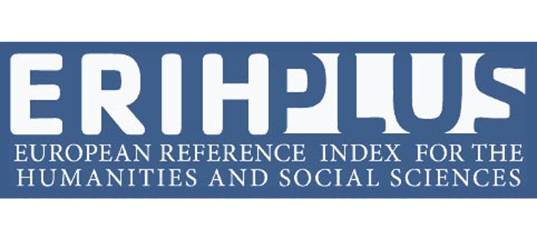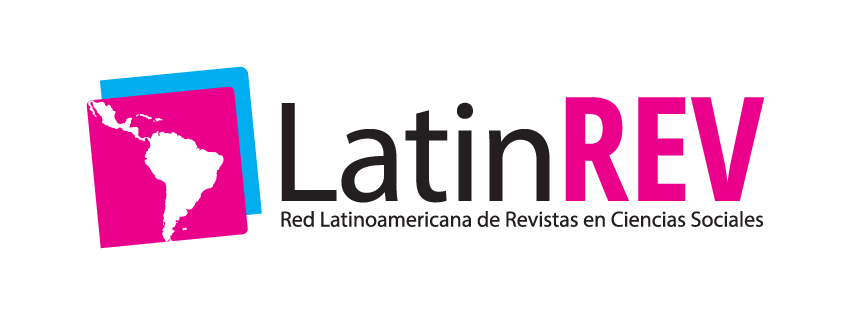Application of a hybrid model of Theory of Tails and Evolutionary Algo-rithm to measure the optimization in the service of attention to the client in a place of fast food
Abstract
In this paper, the analysis of the queue study is presented in order to optimize the customer service, because people wait too long to receive the service, which is likely to make the client impatient and choose to go to competition generating economic losses and bad reputation of the establishment. For the study, the problem of the “Burger Ranch” premises was taken into account in order to develop a model whose implementation includes the Evolutionary Algorithm in which it is based on the methodology of data collection in a time range of 11 a.m. at 13 p.m. to perform the respective processing and analysis of these; and in turn the simulation is developed in Excel, to estimate the use of the service, according to the amount of customers that it receives daily. For the simulation, the information collected was taken into account based on the attention that was made within the service during the days of the working week, imitating the behavior observed in real life together with the hand of Artificial Intelligence, giving As a result, it is necessary to acquire two new servers to optimize 33.84% in the service system
Downloads
Metrics
References
E. López Hung y L. G. Joa Triay, «Teoría De Colas Aplicada Al Estudio Del Sistema De Servicio De Una Farmacia,» Revista Cubana de Informática Médica, pp. 1-13, 2018.
J. F. Pérez y G. Riaño, «Análisis De Colas Para El Diseño De Una Cafetería Mediante Simulación De Eventos Discretos.,» Scielo, pp. 1-10, 2010.
C. Petrev, «Algoritmos Genéticos Aplicados A Soluciones Logísticas De Sanidad: Simulación De Un Modelo De Evacuación De Heridos Del Teatro De Operaciones,» Escuela Superior de Guerra Conjuntade las Fuerzas Armadas, pp. 1-74, 2012.
M. E. Chávez López y A. Espinoza Guzmán, «Minimizar El Tiempo De Reinscripción Mediante Un Sistema De Simulación De Modelo De Líneas De Espera,» Redalyc, pp. 1-9, 2015.
O. J. Nicho Barrera, «Rediseño De Procesos Para La Disminución De Tiempos De Espera En El Servicio De Un Comedor Administrado Por Un Concesionario Dentro De Una Empresa Del Sector Financiero,» Universidad Nacional Mayor de San Marcos, pp. 1-92, 2017.
F. G. Correa Navarrete, «Análisis Y Propuesta De Simulación De Sistema De Colas En La Institución Financiera JEP Para Reducir Tiempos De Espera.,» UTMATCH, pp. 1-23, 2018.
M. E. Rodríguez Lino, «Plataforma Tecnológica Para Contribuir La Planeación Urbana En La Ciudad De Guayaquil Dirigido A La Transportación, Enfocado Al Uso De Algoritmos Recomendadores Que Brinden Alternativas De Solución En Proyectos Viales,» Universidad de Guayaquil, pp. 1-132, 2018.
K. H. Solis Castillo y j. F. Granoble Ramirez, «Propuesta Tecnológica Para El Retiro Y Depósito De Dinero En Cajeros Automáticos Mediante Código QR En La Ciudad Guayaquil,» Universidad de Guayaquil, pp. 1-117, 2019.
G. G. C, «Naps Tecnología y educación,» 07 junio 2018. [En línea]. Available: http://naps.com.mx/blog/simulacion-en-python-usando-simpy/.
J. M. I. Landeta, Fundamentos de Sistemas para Administración, primera ed., San Luis Potosi: Universitaria Potosina, 1996, p. 257.
L. Hillier, « Introducción a la investigación de operaciones,» 1999.
P. C. CARGILL, «SISTEMA PARA MEDIR TIEMPOS DE ESPERA EN COLAS DE SUPERMERCADO USANDO VISIÓN POR COMPUTADOR Y MÉTODOS ESTADÍSTICOS.,» Santiago de Chile, Enero, 2011, p. 61.
M.Sc. Ing. Eduardo López Hung, M.Sc. Lic. Lai Gen Joa Triay, «Teoría de colas aplicada al estudio del sistema de servicio de una farmacia,» Revista Cubana de Informática Médica, vol. 10, nº 1, pp. 3-15, 2018.
V. M. Alvarado Verdín, Probabilidad y estadística, 2014.
CARLOS LUIS FLORES GARCÍA, CAROLINA LISSETTE LINARES ALVARENGA, JUAN MIGUEL BONILLA IRAHETA., «TEORÍA DE COLAS Y SU APLICACIÓN AL SISTEMA BANCARIO.,» Ciudad Universitaria, Salvador, 2009, p. 150.
H. &. Lieberman, «Problema de teoria de colas,» Cali, 2012.
W. WL., «Aplicaciones y Algoritmos.,» de Investigación de Operaciones. , 4ta Edición ed., Stamford, Thomson Internacional, 2004.
R. Terrazas Pastor, «APLICACIÓN DE LA SIMULACIÓN A UN SISTEMA DE COLAS DE CANAL SIMPLE,» Redalyc, nº 26, pp. 91-112, julio-diciembre 2010.
L. Cevallos-Torres y M. Botto-Tobar, «Case study: Logistical behavior in the use of urban transport using the monte carlo simulation method. In Problem-Based Learning: A Didactic Strategy in the Teaching of System Simulation,» Springer, pp. 97-110., 2019.
L. Cevallos-Torres y M. Botto-Tobar, «Case study: Probabilistic estimates in the application of inventory models for perishable products in SMEs. In Problem-Based Learning: A Didactic Strategy in the Teaching of System Simulatio,» Springer, pp. 123-132, 2019.
L. Cevallos-Torres y M. Botto-Tobar, «Monte carlo simulation method. In Problem-Based Learning: A Didactic Strategy in the Teaching of System Simulation,» Springer, pp. (pp. 87-96)., 2019.
J. M. I. Landeta, Fundamentos de Investigación de Operaciones para Administración, primera ed., San Luis Potosi: Universitaria Potosina, 1996, p. 257.
J. Cardona, «teoría de colas,» Huancayo, 2014.
R. C. P. -. D. G. Gómez, «Modelo de lineas de espera,» Mar del Plata , 2015.
Á. D. B. Castillo, «Gestión de las líneas de espera en el caso real de un centro óptico en Cartagena,» 2013.
L. Cevallos-Torres y M. Botto-Tobar, «seudo-random numbers and congruential methods. In Problem-Based Learning: A Didactic Strategy in the Teaching of System Simulation,» Springer, pp. (pp. 33-58), 2019.
L. Cevallos-Torres y M. Botto-Tobar, «Random variable generation methods. In Problem-Based Learning: A Didactic Strategy in the Teaching of System Simulation,» Springer, pp. (pp. 59-86), 2019.
L. Cevallos-Torres y M. Botto-Tobar, «Case study: Project-based learning to evaluate probability distributions in medical area. In Problem-Based Learning: A Didactic Strategy in the Teaching of System Simulation,» Springer, pp. 111-122, 2019.
PDF (Español (España)) 1210 HTML (Español (España)) 183
Authors maintain the rights to the articles and are therefore free to share, copy, distribute, execute, and publicly communicate the work on their personal websites or in institutional deposits, after its publication in this journal, as long as they provide bibliographic information that certifies its publication in this journal.
The works are under one https://creativecommons.org/licenses/by-nc-nd/4.0/





























